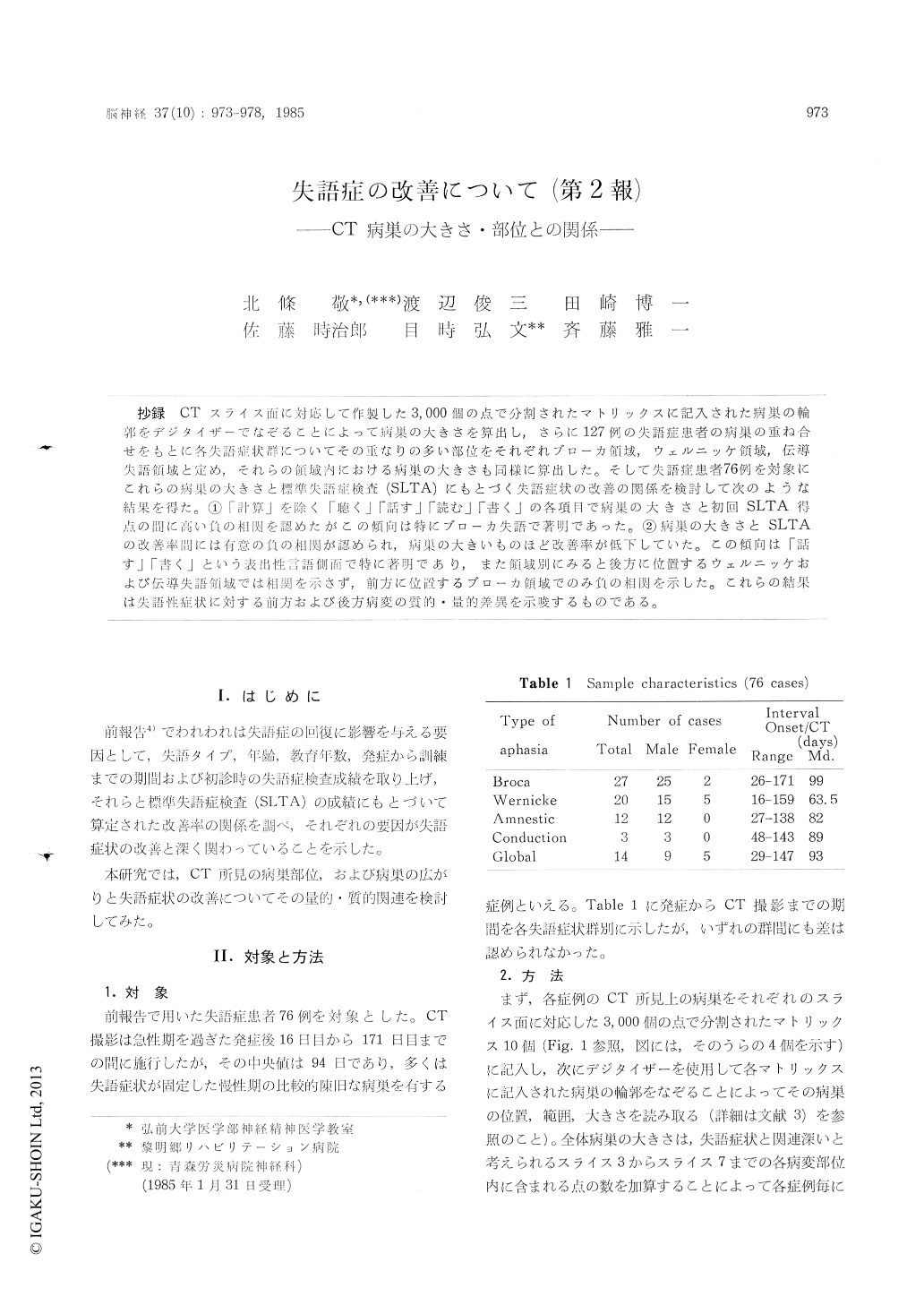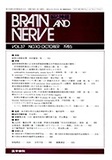Japanese
English
- 有料閲覧
- Abstract 文献概要
- 1ページ目 Look Inside
抄録 CTスライス面に対応して作製した3,000個の点で分割されたマトリックスに記入された病巣の輪郭をデジタイザーでなぞることによって病巣の大きさを算出し,さらに127例の失語症患者の病巣の重ね合せをもとに各失語症状群についてその重なりの多い部位をそれぞれブローカ領域,ウェルニッケ領域,伝導失語領域と定め,それらの領域内における病巣の大きさも同様に算出した。そして失語症患者76例を対象にこれらの病巣の大きさと標準失語症検査(SLTA)にもとづく失語症状の改善の関係を検討して次のような結果を得た。①「計算」を除く「聴く」「話す」「読む」「書く」の各項目で病巣の大きさと初回SLTA得点の問に高い負の相関を認めたがこの傾向は特にブローカ失語で著明であった。②病巣の大きさとSLTAの改善率間には有意の負の相関が認められ,病巣の大きいものほど改善率が低下していた。この傾向は「話す」「書く」という表出性言語側面で特に著明であり,また領域別にみると後方に位置するウェルニッケおよび伝導失語領域では相関を示さず,前方に位置するブローカ領域でのみ負の相関を示した。これらの結果は失語性症状に対する前方および後方病変の質的・量的差異を示唆するものである。
The digitizer pogram was used to determine the size of the lesions by tracing them onto standard-ized matrices which were divided into 3000 point and corresponded to CT slices. Moreover, on the basis of the results of accumulated lesions on 127 cases with various types of aphasia, the highly involved sites ware determined as Broca's area, Wernicke's area and conduction area, and the sizes of the lesions in each area were also determined. The correlation between these sizes of the lesions and recovery rates based on the 2 SLTA scores (initial and 3 months later) was studied. The results obtained were as follows:
1) The correlation coefficient between the size of total area and the intial SLTA score was -0. 46, significant at p<0.01. The negative coorrelation means that the larger the lesion, the more severe the aphasia. This tendency was seen in all lan-guage aspects except "calculation" (i. e. hearing, speaking, reading, writing). A similar, highly sig-nificant negative correlation was obtained be-tween the lesion sizes of Broca's area, Wernicke's area, conduction area and initial SLTA scores, but among the various types of aphasics, only the Broca aphasics have a highly significant negative correlation between lesion size and initial SLTA score.
2) The negative correlation between the size of total area and the recovery rate was observed. This tendency was seen especially in the expres-sive disorders, namely "speaking" and "writing". These findings indicate that the larger the lesions, the less overall recovery will occur in total lan-guage deficit and in speaking and writing disorders. Concerning the various areas, the negative corre-lation was obtained only in the Broca's area, which is located in an anterior part of the brain and neither in the Wernicke's area nor the con-duction area, which are located in a posterior part of the brain.
These results indicate that there are some qua-litative and quantitative differences between ante-rior and posterior lesions.

Copyright © 1985, Igaku-Shoin Ltd. All rights reserved.


